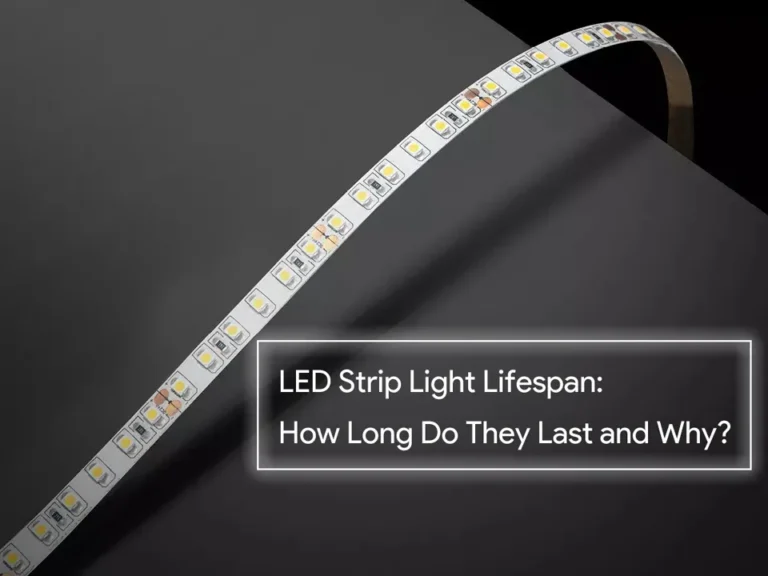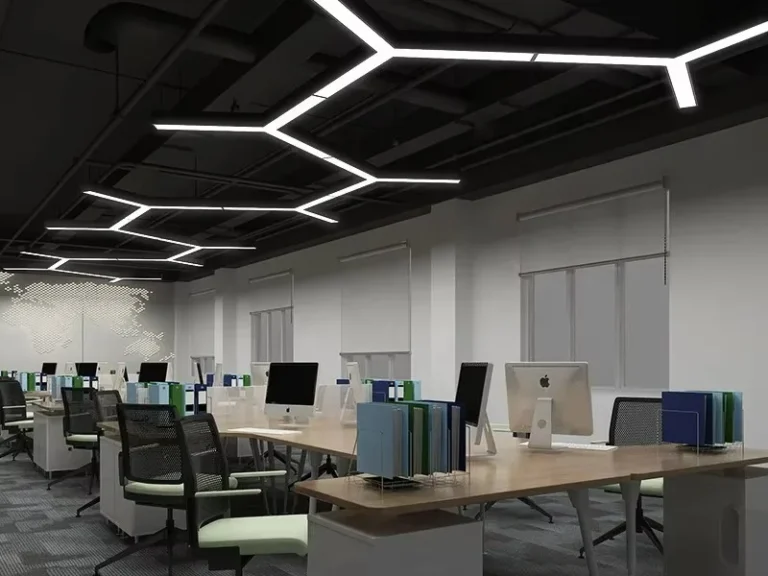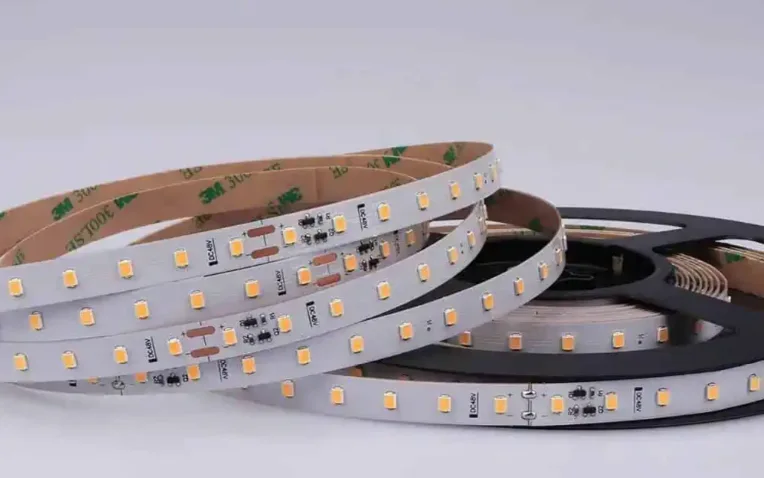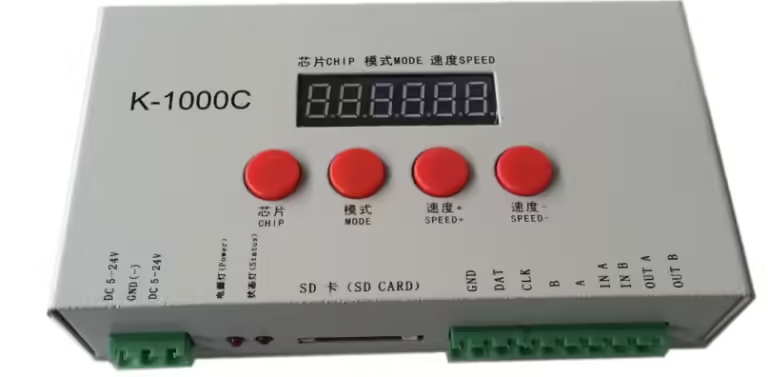Światła neonowe LED są szeroko stosowane w oświetleniu architektonicznym, dekoracjach komercyjnych i projektach oznakowania ze względu na ich elastyczność i żywy wpływ wizualny. Jednakże, gdy rzeczywiste wymiary neonu różnią się znacznie od specyfikacji nominalnych, może to stwarzać poważne wyzwania instalacyjne. Ten problem staje się jeszcze bardziej krytyczny w projektach, w których klienci przygotowują miejsca instalacji ściśle na podstawie określonych wymiarów. Niedopasowanie zaledwie kilku milimetrów może prowadzić do złego dopasowania, widocznych szczelin, a nawet niekompatybilności strukturalnej. Z tego powodu tolerancja wytłaczania — zmienność wymiarowa nieodłącznie związana z procesem wytłaczania — odgrywa kluczową rolę w zapewnieniu spójności produktu i bezproblemowej instalacji w profesjonalnych neonach LED.
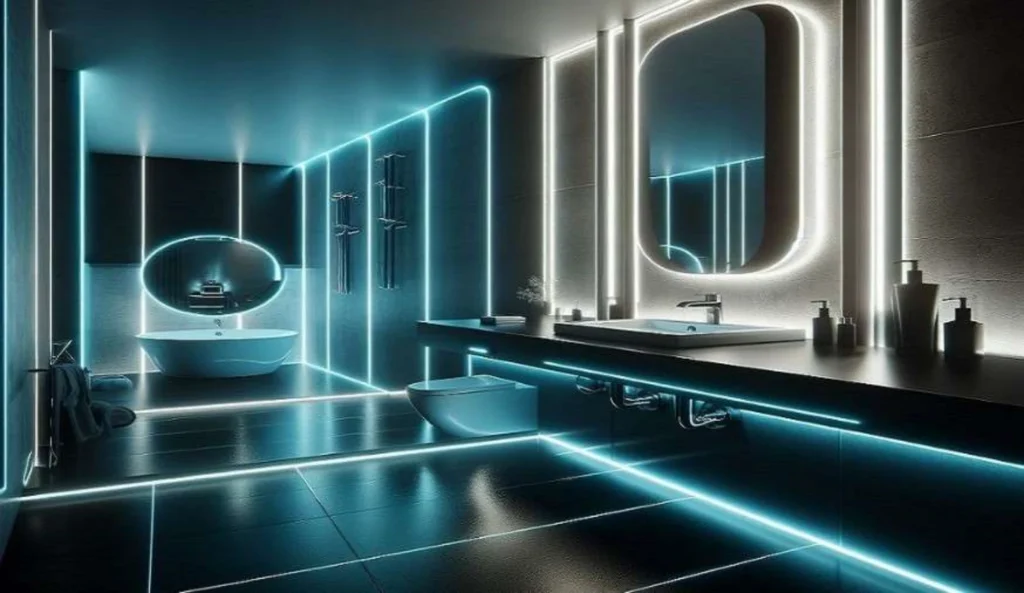
Dlaczego diody LED neonowe mają tolerancje wymiarowe?
Właściwości materiału
Najbardziej podstawowym czynnikiem wpływającym na tolerancję wymiarową w Neony LED jest surowcem. Elastyczne profile neonowe są zazwyczaj wykonane z silikonu lub PVC, które są narażone na rozszerzalność cieplną i skurcz. Nawet niewielkie zmiany temperatury podczas produkcji lub później w aplikacji mogą powodować zmiany szerokości, wysokości lub krzywizny wytłaczania. Różnice w twardości materiału lub sformułowaniu między partiami mogą również prowadzić do niespójnych wymiarów, co czyni stabilność materiału kluczowym elementem kontroli tolerancji.
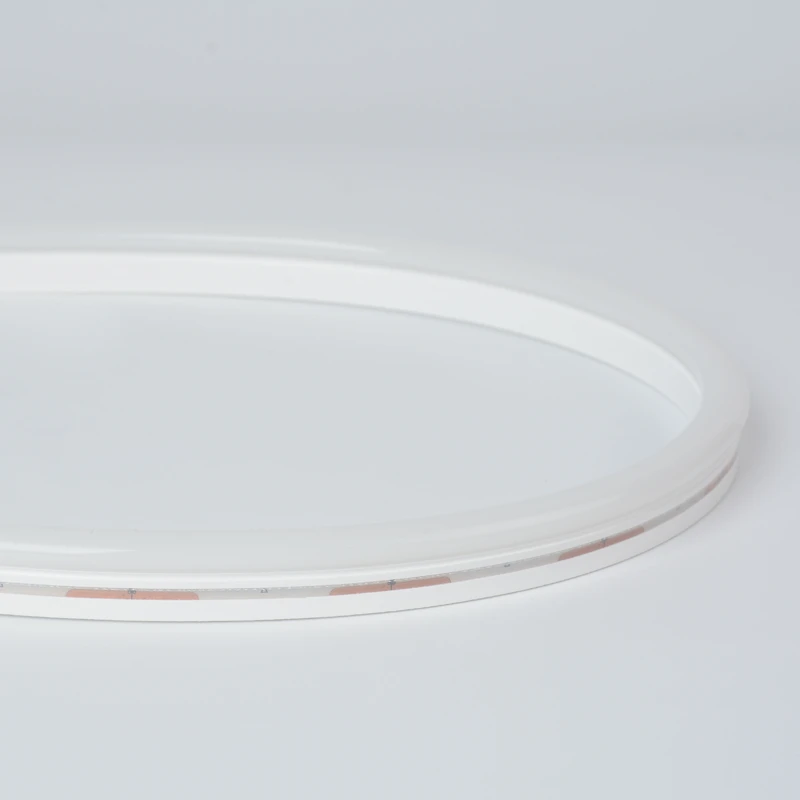
Silikonowe światło neonowe
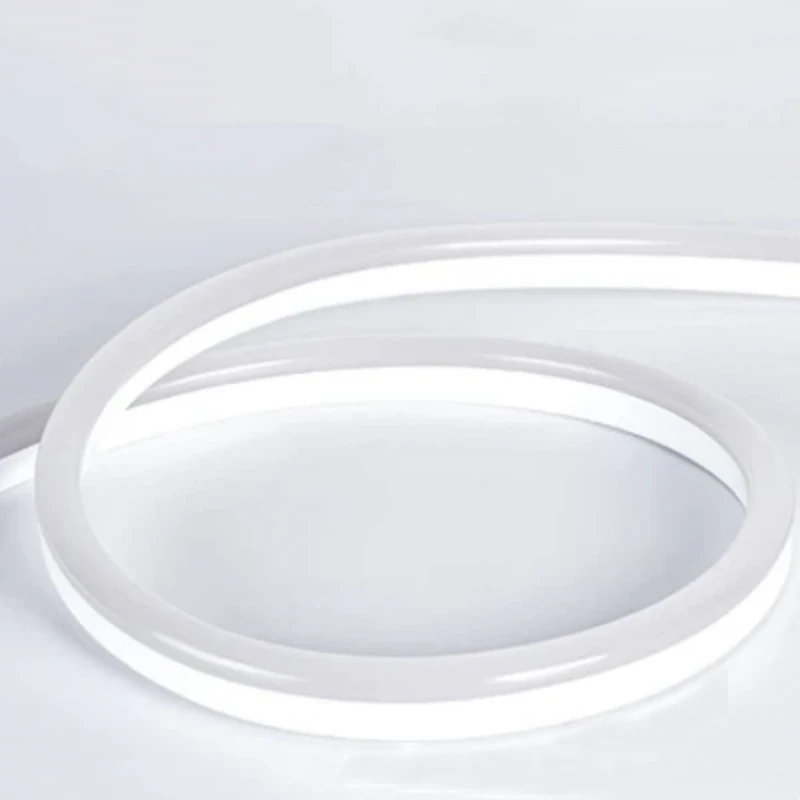
neonowe światło pcv
Kontrola procesu wytłaczania
Sam proces wytłaczania jest kolejnym głównym źródłem zmienności wymiarów. Precyzja zależy w dużej mierze od dokładności formy do wytłaczania, a także od konsystencji temperatury, ciśnienia i prędkości wytłaczania. Na przykład, jeśli warunki chłodzenia są niestabilne – takie jak niespójne chłodzenie wodą lub przepływ powietrza – profil może się kurczyć lub odkształcać nierównomiernie. Te małe odchylenia mogą się kumulować, co skutkuje produktem końcowym, który wykracza poza określony zakres tolerancji.
Zmienność partii produkcji
Nawet przy tej samej formie i materiale tolerancja wymiarowa może się różnić w zależności od partii produkcyjnych. Czynniki takie jak kalibracja maszyny, regulacje operatora i warunki środowiskowe, takie jak wilgotność, mogą subtelnie wpływać na wynik. W przypadku dużych wielkości produkcyjnych te zmiany mogą bezpośrednio wpływać na kompatybilność neonu LED z kanałami montażowymi i akcesoriami.
Cena i presja kosztowa
Innym często pomijanym czynnikiem jest cena. Na wysoce konkurencyjnych rynkach niektórzy tani dostawcy mogą narażać się na kompromis w zakresie jakości materiału lub obniżyć etapy produkcji w celu obniżenia kosztów. Stosowanie tańszego silikonu, PVC z recyklingu lub mniej precyzyjnego sprzętu do wytłaczania nieuchronnie zwiększa zmienność wymiarów. Chociaż cena z góry może być atrakcyjna, długoterminowe ryzyko złego dopasowania, skrócenia żywotności i wyższe koszty utrzymania sprawiają, że takie kompromisy są kosztowne dla profesjonalnych projektów.
Typowe zakresy tolerancji dla wytłaczania neonowego LED
Standardy tolerancji branżowej
W przemyśle neonowym LED tolerancja wytłaczania jest zwykle definiowana z niewielkim marginesem, aby zapewnić niezawodne dopasowanie i jednolity wygląd. Większość producentów przyjmuje tolerancję wymiarową między ±0,3 mm a ±1,0 mm, w zależności od wielkości i kształtu profilu. Chociaż nie ma jednego globalnego standardu, zakresy te są ogólnie akceptowane w projektach profesjonalnych w zastosowaniach architektonicznych i oznakowań.
Różnice między typami emisji światła
Wymagania tolerancji mogą się również różnić w zależności od różnych struktur emisji. Neon emitujący z przodu często ma bardziej rygorystyczną kontrolę, ponieważ widoczna powierzchnia bezpośrednio wpływa na jednorodność oświetlenia, podczas gdy boczne neony emitujące i zginające z góry pozwalają na nieco szerszą tolerancję ze względu na elastyczność strukturalną. Większe profile pokrycia, takie jak neon emitujący 270° lub 360°, wymagają bliższego monitorowania podczas wytłaczania, ponieważ przesunięcia wymiarowe wpływają zarówno na rozkład światła, jak i stabilność instalacji.
Typowe zakresy tolerancji według rozmiaru i typu neonów
| ledowy typ neonu | Wspólny rozmiar (S×H lub Dia.) | Typowa tolerancja wytłaczania |
| Mini neon (smukły) | 4×8 mm | ±0,3 mm |
| Mini neon emitujący boczny neon | 6×12 mm | ±0,4 mm |
| Standardowe emitowanie z przodu | 8×16 mm | ±0,5 mm |
| Standardowe emitowanie boczne | 10×20 mm | ±0,5 mm |
| Neon zginany od góry | 12×20 mm | ±0,5 mm |
| Szeroki neon emitujący z przodu | 12×25 mm | ±0,6 mm |
| Neon okrągły 270° | Ø16 mm | ±0,6 mm |
| Duży neon 270° | Ø20 mm | ±0,8 mm |
| Elastyczny neon 360° (mały) | Ø15 mm | ±0,5 mm |
| Elastyczny neon 360° (duży) | Ø25 mm | ±1,0 mm |
Jak tolerancja wymiarowa wpływa na aplikacje neonowe
1. Wyzwania instalacyjne
Gdy tolerancja na wytłaczanie świateł neonowych LED nie jest dobrze kontrolowana, instalacja staje się problematyczna. Nawet niewielkie różnice wymiarowe mogą spowodować, że profil jest zbyt ciasny lub zbyt luźny wewnątrz aluminiowych kanałów lub szczelin montażowych. Często prowadzi to do widocznych luk, nierównomiernego wyrównania lub zwiększonej pracy podczas montażu na miejscu. W przypadku projektów architektonicznych na dużą skalę, stałe wymiary są niezbędne do osiągnięcia bezproblemowej instalacji i ograniczenia przeróbek.
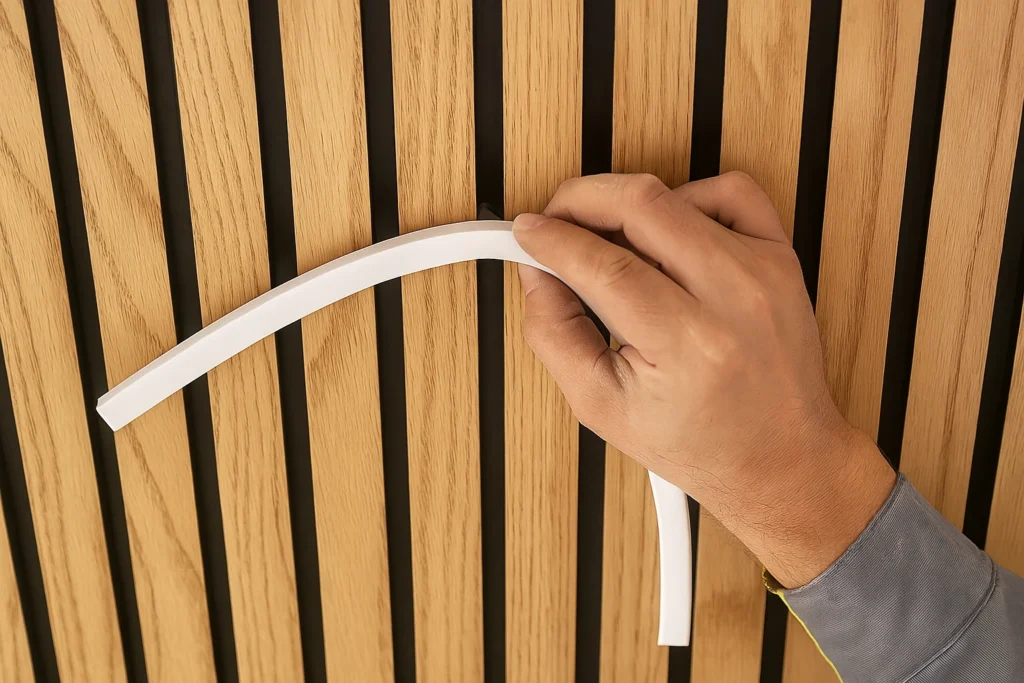
2. Wpływ na jednorodność światła
Tolerancja wytłaczania wpływa również na jednorodność strumień świetlnych. Różnice w grubości kapsułkowania silikonu lub PVC mogą powodować niespójną dyfuzję, powodując obszary, które wydają się jaśniejsze lub ciemniejsze. W neonu emitującym z przodu ten nierównomierny rozkład światła staje się szczególnie zauważalny, co zmniejsza ogólną jakość wizualną instalacji.
3. Wodoodporność i niezawodność
Kwestie tolerancji dodatkowo wpływają na wodoodporność i długoterminową niezawodność produktów neonowych LED. Jeśli wymiary profilu odbiegają od określonego zakresu, uszczelnienie wokół zaślepek, złączy lub złącza może nie być w pełni skuteczne. To obniża ocenę IP i zwiększa ryzyko wnikania wody, co może skrócić żywotność produktu i spowodować awarie w aplikacjach zewnętrznych.
Jak kontrolować i rozwiązywać problemy z tolerancją w neonach LED
1. Optymalizacja procesu produkcyjnego
Pierwszym krokiem w zmniejszeniu tolerancji wytłaczania jest precyzyjna kontrola procesu produkcyjnego. Wysoka precyzja form, stabilna prędkość wytłaczania i odpowiednia regulacja temperatury odgrywają istotną rolę w utrzymaniu stałych wymiarów. Regularna konserwacja i kalibracja urządzeń do wytłaczania dodatkowo zapewniają dokładność.
2 Środki kontroli jakości
Równie ważna jest ścisła kontrola jakości. Producenci powinni wdrożyć monitorowanie na linii podczas wytłaczania i przeprowadzać końcowe inspekcje wymiarowe na gotowych światłach neonowych LED. Rejestracja danych tolerancji pomaga wykrywać trendy i zapobiegać dotarciu do klientów wadliwych partii.
3. Projekt i rozważania dotyczące projektu projektu i instalacji
Z perspektywy projektu projektanci i instalatorzy mogą zminimalizować ryzyko, uwzględniając marginesy tolerancji w rozmiarach szczelin, aluminiowych kanałach i akcesoriach. Planowanie z uwzględnieniem zmian w wytłaczaniu zapewnia płynniejszą instalację na miejscu i ogranicza nieoczekiwane zmiany.
4. Wybór rzetelnego dostawcy
Wreszcie, wybór dostawcy z sprawdzoną wiedzą w zakresie tolerancji na wytłaczanie neonów LED ma kluczowe znaczenie. Profesjonalni producenci z zaawansowanym sprzętem, certyfikacją i dobrym systemem jakości zapewniają bardziej stabilne produkty, dając właścicielom projektów pewność długoterminowej wydajności.

Wniosek: Zapewnienie spójności w profesjonalnych projektach neonowych LED
Tolerancja wymiarowa jest nieuniknionym czynnikiem w produkcji światła neonowego LED, ale dzięki odpowiednim materiałom, ścisłej kontroli wytłaczania i profesjonalnemu zarządzaniu jakością można ją skutecznie zminimalizować. Dla architektów, projektantów i wykonawców współpraca z niezawodnym dostawcą jest kluczem do zapewnienia płynnej instalacji i długoterminowej wydajności.
Przy Sygnalizator LED, używamy wysokiej jakości silikonu dymowego w całym naszym neonowym wytłaczaniu, zapewniając stabilne wymiary, które w pełni spełniają standardy tolerancji branżowych. Jeśli Twój projekt wymaga unikalnych rozmiarów lub węższych tolerancji, nasz zespół może dostarczyć dostosowane do Twoich potrzeb rozwiązania, które będą dopasowane do Twoich dokładnych specyfikacji. Skontaktuj się z nami już dziś, aby omówić Twoje wymagania i zabezpieczyć wysokiej jakości neonowe światła LED dostosowane do profesjonalnych zastosowań.
